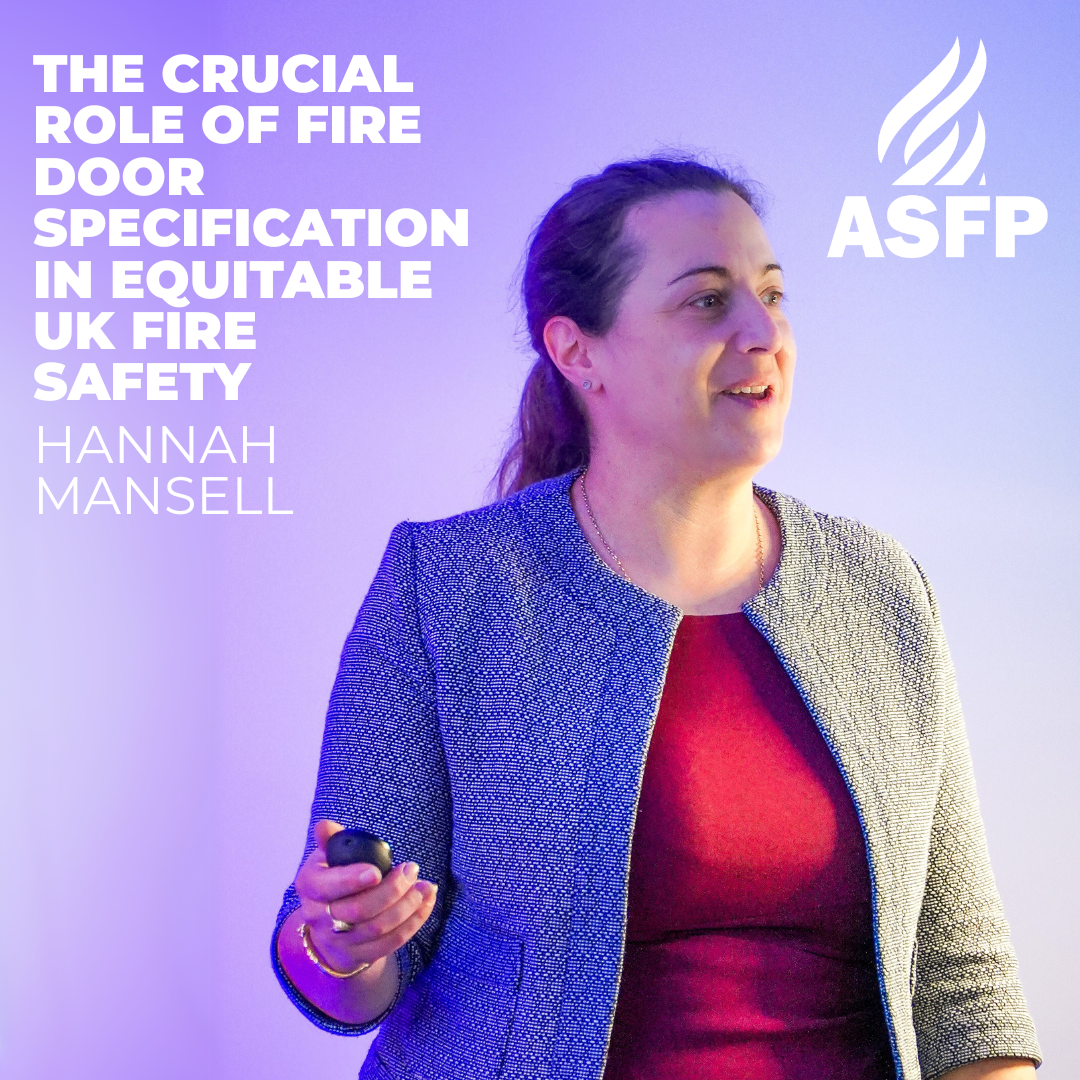United Against Fire: The Crucial Role of Fire Door Specification in Equitable UK Fire Safety
30 April 2025
 Hannah Mansell is Principal Technical Consultant for ADOORABILITY, Facilitator of the UK Fire Door Think Tank, and Technical Author for the ASFP Task Group 10: Fire doors committee. Hannah Mansell is Principal Technical Consultant for ADOORABILITY, Facilitator of the UK Fire Door Think Tank, and Technical Author for the ASFP Task Group 10: Fire doors committee.
In this thought leadership piece, Hannah reflects on what equitable fire safety means in terms of fire doors and how the approach of the ASFP Task Group 10 aims to fill the knowledge gap.
In recent years, the approach to fire safety and fire doors has become a principal concern, driven by tragic cases and growing awareness of the importance of robust fire door safety measures. In our evolving society, the importance of futureproofed buildings and occupant fire safety cannot be underestimated. We continue to build and innovate, we continue to attempt to improve our working and living environments, and we need to ensure that every person has access to effective fire safety measures.
Equitable fire safety is ensuring that any person, despite their background and unique needs, where they came from, their age, their social or economic status, their language, physical or cognitive abilities, or their location, have the same level of fire safety protection as everyone else in their homes. Safety in our homes is a basic human right, not a privilege.
You may be wondering how this is relevant to fire doors... There are many design and dynamic aspects of fire doors in use that either will encourage or inhibit proper use and despite this being an often little-thought about building element, they are surprisingly complex products. The Grenfell Tower Public Inquiry was right to highlight the behavioural aspects associated with fire doors, and that when they become a barrier to everyday use, they can become a safety issue. Equally, it was right to highlight that lack of a holistic approach to the specification and designing responsibly for the intended use and users contributed to the state that the doors were in on the night of the fire, and the protections that they did, and did not offer the residents and emergency services attending that night.
Letting one performance aspect take precedence over another can lead to unintended consequences, potentially at great, great cost. Getting the specification right, answering to the true needs of the users of fire door products, and designing and planning how the product will be used and maintained during its lifetime are all integral to future-proof safety. And who better to advise on these matters? Those that use them the most - the residents and end users. Let us hear their voices. 2025 has to be the turning point of seismic and positive change for fire door safety.
As the sector starts to transition to an EN framework, a wider seismic mindset change is needed in many parts of the sector. The new system will present challenges and steep learning curves… and not just for those placing products on the market. The very documents and fundamentals that the stakeholders and users of the UK fire door industry have become so familiar with, based their decisions on, and the models that they have used to discharge their legal duties, will also change. But whilst attention is drawn to this singular factor, let those working in the sector not forget the bigger piece. Step back from the threshold and see what is really at stake here.
No longer can the sector claim ignorance or lack of readiness, or wait to be told by the Government what they are supposed to do. The next few years will be years of reckoning, a shakedown of the sector, where those that are not ready to revolutionise and step up to the needs of their end users and fully answer to the findings of the Grenfell fire, may simply disappear. Those that are working in the sector hold a great weight of responsibility because the way that they choose to present and place their products on the market now, will define the roadmap of the next few decades. There is a huge amount of work still to be done, and in some cases, a complete rethink as to the approach. If the sector doesn’t recognise this as the singular magic window of opportunity to change for the better, then it is a woeful response to the lessons of Grenfell.
But to do this, the sector needs a collaborative approach and to let down perceived barriers. It needs a mindset of doubling down in effort and futureproofing, challenging each other with the uncomfortable questions and responding to them, with vigour. It needs a mindset of research, transparency, collaboration, excellence and investment in the products, the processes and the people that this sector serves. The ASFP Task Group 10 recognises their role in facilitating this collaboration, joining up the different dots and stakeholders, listening and responding to concerns, and delivering meaningful change in terms of knowledge sharing.
The ASFP Green Book: Fire door systems will be available with accompanying resources in 2025.
This article is housed in our upcoming Journal & Membership Directory - pick up your copy from the 8th May at our AGM & London Seminar, or at any of our trade shows and events in the near future.
|